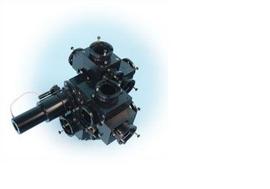 |
Date Announced: 09 Aug 2010
White paper from UK company describes plug-and-play ultra-high-speed framing cameras.
Specialised Imaging Ltd. has published a new white paper 'Ultra high-speed imaging: taking the hype out of hypervelocity' that describes how ultra-high speed framing cameras have evolved into simple plug-and-play systems that are enabling the previously challenging study of hypervelocity micro-particle impact events.
Traditionally, ultra high-speed framing cameras have been deployed in the science of very fast phenomena, such as high voltage discharge, crack propagation, detonics, and hypervelocity particle-impact studies. These traditional sciences have now been joined by biomedical and botanical studies, nanotechnology, and space research, where the speed of image capture is not always the most important factor-and in some cases, speeds of 500,000 frames per second (fps) or less are acceptable.
However, the ability to "freeze" the motion and obtain high-quality, high-resolution imagery that allows detailed, accurate analysis is of the utmost importance. In the past, a good sequence of pictures from the event was enough, but nowadays, accurate timing, high resolution, and short exposures are required as the data from the images are often correlated with simulation data and then used to adjust numerical models that deepen the understanding of the physical processes involved.
The new white paper (http://www.specialised-imaging.com/research_articles.php) describes the development of an ultra high-speed imaging engine that uniquely delivers accurate timing, short exposure times, flexible control and high resolution imagery free of artifacts such as vignetting, parallax and astigmatism.
The study of hypervelocity micro-particle impact events is one of the most taxing experiments open to study with ultra high-speed framing cameras because there is often uncertainty in the velocity of the projectile, and the images are normally taken with high magnification in a small field of view (FOV). The projectiles typically travel between 2 and 5 km/s; therefore, even the slightest variation in velocity can result in either capturing or completely missing the event.
The authors demonstrate the outstanding performance of the Specialised Imaging SIM Ultra high-speed framing camera system using customer hypervelocity micro-particle impact data courtesy of NASA, White Sands Testing Facility and the Thiot-Ingeniere Laboratory.
Specialised Imaging Ltd. is a knowledgeable, dynamic company focused upon design, manufacture, service and supply of ultra high-speed imaging systems and components for industrial, defence and scientific applications.
Source: Specialised Imaging
Specialised Imaging Ltd.
Unit 32, Silk Mill Industrial Estate
Tring
Herts. HP23 5EF
UK
Tel: +44-1442-827728
Fax: +44-1442-827830
E-mail: info@specialised-imaging.com
Web Site: www.specialised-imaging.com
| © 2025 SPIE Europe |
|